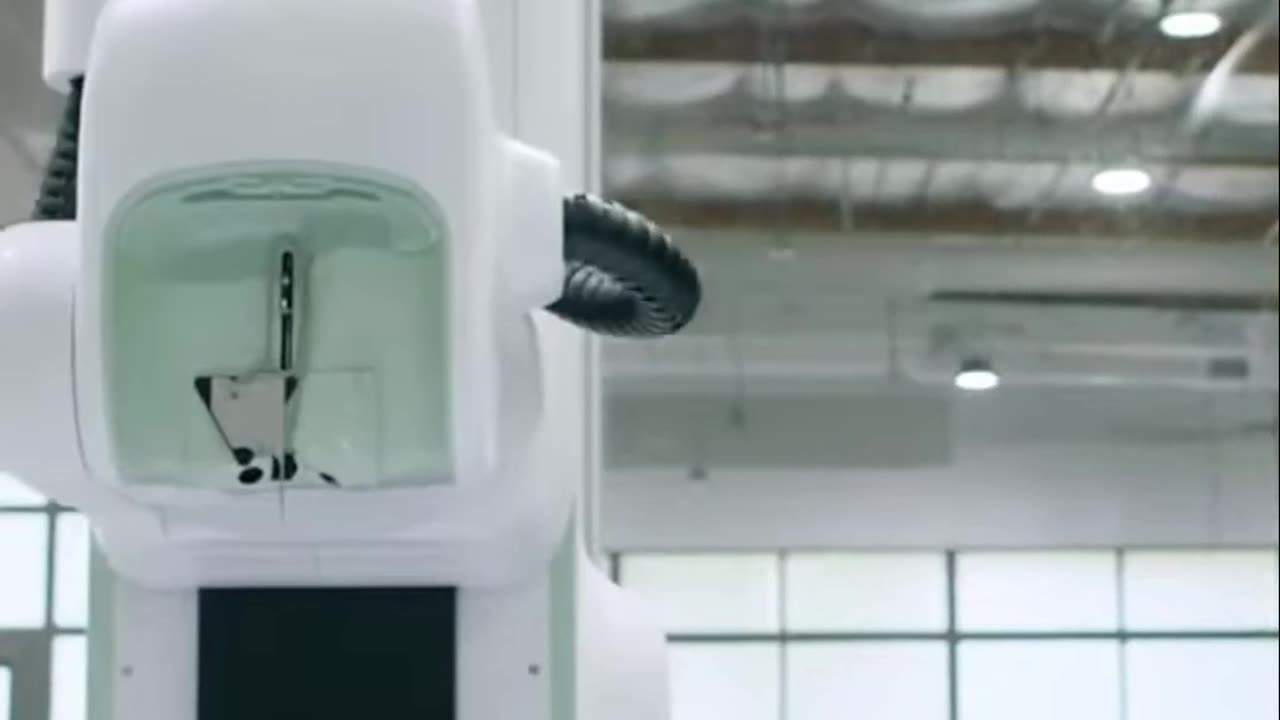Premium Only Content

Revolutionizing Surgery: How Neuralink's Robot Transforms Brain Implants
The video details the challenges and advancements in the development of Neuralink's surgical robot for chip insertion into the brain.
[09:18-10:05]
The Neuralink team discusses the challenges of inserting chips into brain tissue and the development of a specialized surgical robot.
You need to understand that human hands can get shaky when doing tasks that require precision. When it comes to inserting the chip's threads into a brain tissue, that's one of the biggest challenges. Even the best surgeons in the world might struggle because the threads are so tiny that they're hard to see, let alone put into the brain. That's why a specialized surgical robot was developed with the utmost dedication from the Neuralink team. The needle that the Neuralink robot uses to puncture brain tissue is made from a tungsten wire that's just 40 micrometers thick. The design of the needle tip is crucial because it needs to insert the wire to the cortex and then release it accurately before quickly retracting, kind of like a sewing machine. Neuralink spent the last 2 years rigorously testing this needle design. Even though patients might not be awake to see the machine in action, it's still quite important to design a robot that does not appear intimidating.
[10:05-10:47]
A detailed explanation of the design and functionality of the Neuralink surgical robot is provided, emphasizing its precise engineering and advanced features.
That's why Neuralink's R-One surgical robot is pure white. It looks like a sewing machine with smooth curves and surfaces that give it a look of advanced engineering while also incorporating some softer, approachable elements. Neuralink's surgical robot can be divided into 3 main parts, the head, the body, and the base. The head of the robot is a helmet-like and actually holds the patient's head in place. It also includes a guide for the surgical needle, as well as embedded cameras and sensors to map the patient's brain. Additionally, there are disposable liners inside the helmet to ensure sterile surgery. The Neuralink robot also has a body, that humped rear assembly, which includes all the parts responsible for the motion of the robot as it sets up from the procedure.
-
 2:58:21
2:58:21
xBuRnTx
7 hours ago1st Warzone Stream Online
37.6K2 -
 6:10:21
6:10:21
JdaDelete
1 day ago $3.66 earnedDino Crisis - Sega Saturday
66K4 -
 23:22
23:22
MYLUNCHBREAK CHANNEL PAGE
1 day agoUnder The Necropolis - Pt 5
67.4K29 -
 2:26:11
2:26:11
Jewels Jones Live ®
2 days agoWINNING BIGLY | A Political Rendezvous - Ep. 108
132K44 -
 2:04:49
2:04:49
Bare Knuckle Fighting Championship
4 days agoBKFC FIGHT NIGHT MOHEGAN SUN FREE FIGHTS
63.1K7 -
 25:09
25:09
BlackDiamondGunsandGear
10 hours agoYou NEED to be Training For Whats to Come
43.9K11 -
 20:03
20:03
Sideserf Cake Studio
16 hours ago $1.64 earnedA HUNGRY HUNGRY HIPPOS CAKE THAT ACTUALLY WORKS?
42.4K13 -
 23:51
23:51
marcushouse
16 hours ago $1.38 earnedStarship’s Next Move Is Coming Sooner Than You Think!
30K6 -
 22:24
22:24
The Finance Hub
22 hours ago $9.32 earnedBREAKING: JOE ROGAN JUST DROPPED A MASSIVE BOMBSHELL!!!
32.9K33 -
 55:02
55:02
PMG
12 hours ago $0.82 earnedHannah Faulkner and Miriam Shaw | Moms on A Mission
22.8K1